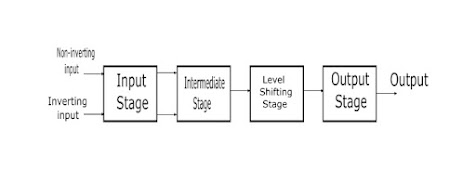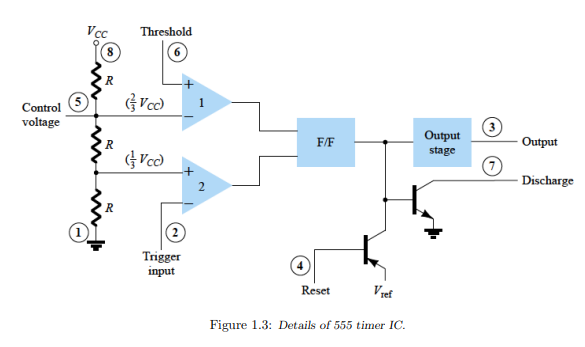- An operational amplifier is a direct-coupled high gain amplifier usually consisting of one or more differential amplifiers and usually followed by a level translator and an output stage. The output stage is generally a push-pull or push-pull complimentary symmetry pair. An operational amplifier(op-amp) is available as a single integrated circuit package.
Input Stage − The input stage is the dual input, balanced output differential amplifier. This stage provides most of the voltage gain and introduces the input resistance of operational amplifier.
Intermediate Stage − This stage is dual input, unbalanced output differential amplifier, which is driven by the output of first stage.
Level Shifting Stage − Since direct coupling is used, therefore the DC voltage at the output of intermediate stage is above the ground potential. Hence, the level shifting transistor circuit is used after intermediate stage to shift the DC level at intermediate stage output downward to zero volts with respect to ground.
Output Stage − The output stage is a push-pull complementary amplifier. The output stage increases the output voltage. The output stage also provides low output resistance.
Characteristics of Ideal Operational Amplifier
An ideal Op-Amp would exhibit the following electrical characteristics −
Infinite voltage gain (A).
Infinite input resistance (Ri) so that any source of signal can drive it.
Zero output resistance (Ro) so that output can drive infinite number of other devices.
Infinite bandwidth so that signal of any frequency (from 0 to ∞ Hz) can be amplified.
Infinite Common Mode Rejection Ration (CMRR = ∞) so the output common mode noise voltage is zero.
Infinite slew rate so that output voltage changes simultaneously with the input voltage changes


Comments
Post a Comment